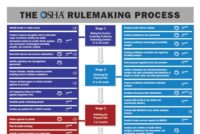When asked if the Biden administration’s five-month push for a COVID-19 vaccine mandate via the U.S. Occupational Safety and Health Administration’s emergency temporary standard was productive, the Associated General Contractors of America described as “confusing and coercive” its requirements for every U.S. employer of 100 or more.
Lawsuits from AGC, other construction sector and business groups and employers, and attorneys general in 26 states quickly followed.
The U.S. Supreme Court’s recent ruling that halted the vaccine-or-test emergency standard—with the conservative court majority questioning President Joe Biden's stated authority to issue the sweeping mandate in the workplace—led OSHA and the U.S. Labor Dept. to withdraw it, but also to start the rulemaking process for a permanent federal regulation.
With industry groups promising legal action for any new standard that doesn’t satisfy Supreme Court criteria, we endorse their contention that the agencies now must bump up efforts to engage with construction sector employers to develop the right approach to get more workers vaccinated.
In 2017, OSHA issued a construction safety standard for respirable silica dust that had included several years of input from unions, manufacturers, contractors and others to develop something beneficial to workers and employers—a result that had been considered impossible.
That rule relied on industry-developed engineering controls validated by two federal agencies, said the National Asphalt Paving Association, one of the participants. A former group CEO said it was recognized as the "gold standard for helping spur voluntary technology advancements to improve worker health and safety." Said AGC at the time: “We all have the same goal.”
Then-Labor Secretary Tom Perez practically beamed with pride at having brought those with skin in the game to the table. “We’ve built a big table and invited everyone to pull up a chair,” he said. The final rule is the product of an extensive public outreach effort and active engagement of all stakeholders,” he said
Industry groups still sued OSHA over the final rule, with some claiming input had not been acted on. But with the standard eventually upheld by a federal appeals court, an ENR editorial that urged firms to comply had the right idea in noting industry’s long “resourcefulness and resilience in safety standard compliance.”
According to OSHA estimates, the silica standard has saved up to 560 lives per year and prevented up to 1,080 silicosis conditions in the construction sector alone.
President Biden and Labor Secretary Marty Walsh could apply lessons from that effort, even in the more dire and contentious workplace risk environment that COVID-19 has created now.
That the pandemic has clearly altered construction work in such an unprecedented and consequential way is all the more reason why Secretary Walsh and his Labor Dept. team must reach out to industry to craft a rule to boost vaccination rates that is both enforceable—and realistic.
There will be lots of negotiating required, of course, but this is something at which we know that Mr. Walsh—as a former union craft worker, building trades official and city mayor in Boston—is an expert.
The outreach is critical to avoid a repeat of OSHA’s early step, taken just three months after the new administration came into office, when the agency actually discouraged COVID-19 vaccination by counting adverse vaccine effects as recordable safety incidents. Contractors were quick to point out how badly that would affect their workforces.
With OSHA’s rulemaking now underway that is designed to allow more meaningful stakeholder input, employers can provide the agency with critical detail on their commitment to vaccination, while also illustrating construction’s unique compliance environment to avoid another one-size-fits-all regulation that courts could again reject.
The high court ruled that the “occupational” in OSHA’s title must actually address workplaces and employees and the needs of construction, such as for work performed mostly outside, which are far different than jobs performed by doctors and nurses in a hospital or by truckers working alone in their cabs.
Industry-specific materials such as “Guidelines for Construction,” a document developed by contractor Clayco with input from local public health authorities and the Federal Centers for Disease Control and Prevention, could have boosted OSHA vaccination and other virus compliance rules to insure construction continued to work safely.
What’s safe for craft workers doing a deep mat concrete pour isn’t the same as what’s safe for doctors treating COVID-19 patients in the emergency room.
Developing rules that show knowledge of industry specifics will allow OSHA to create effective safety regulations that would do more than broad-scale edicts to convince skeptical construction sector employees why vaccination is in their own best interest.
In crafting the proposed rule, we urge Secretary Walsh to show leadership by insuring his team responds to COVID-19’s continuing impacts by seeking input from construction sector CEOs, industry workers and other professionals who have learned to live and work with this pandemic for the last two years.
We understand the urgency to prevent further pandemic consequences, and the pressure the administration is under to create the right vaccine rule in a shorter time frame than the customary years-long process. But to be effective and taken seriously, any vaccine requirements set to become permanent must be industry-specific.
We know Secretary Walsh has the experience, drive and perseverance to make OSHA’s vaccine regulation as successful as the silica rule. Certainly, he can contact his predecessor now with any questions on how to make this process work.




